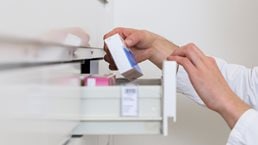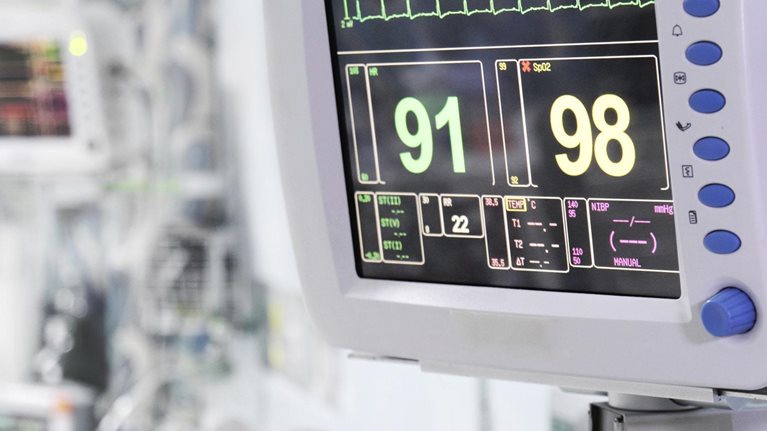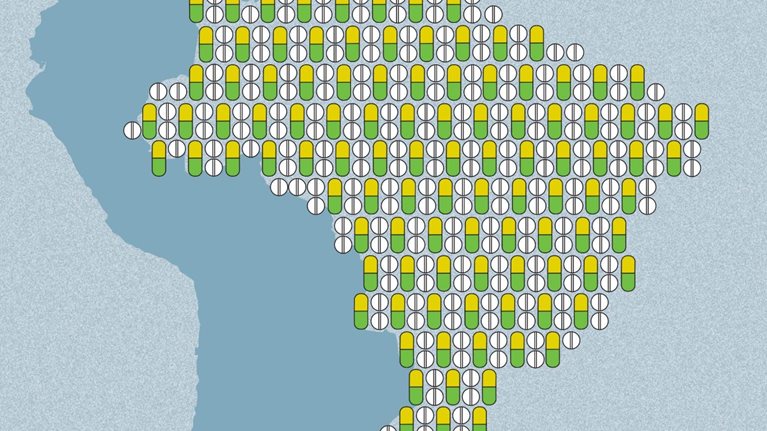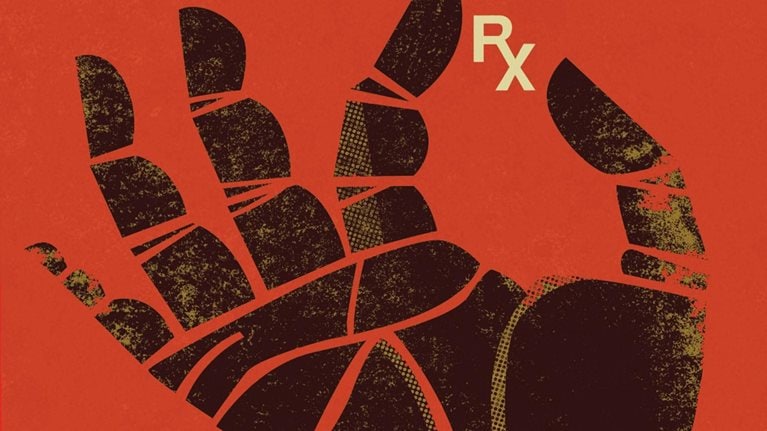The first three quarters of 2014 are in the books and it is clear that pharma’s high-growth velocity in emerging markets has slowed considerably, especially in Brazil. During the last decade the Brazilian pharma market sported double-digit growth rates (Exhibit 1), attracting investments and raising hopes for the future. The next seven years until 2020 will still deliver attractive growth for the overall market, but at a more sustainable rate of 7 to 10 percent annually, rather than the 15 percent year-over-year expansion enjoyed recently.
Brazilian pharma market: Historical and projected growth.

Is above-market growth achievable? We believe it is, because many of the demographic and industry trends that supported significant growth during the last decade still have significant force.
Meta-trends supporting continued growth include an ageing population with more chronic diseases, ascension of the middle class, expanded healthcare coverage and the rise of healthcare as a national priority, with demonstrable growth outside the São Paulo-Rio de Janeiro axis. There is also substantial dynamism in the healthcare industry itself, as reflected in the ongoing global consolidation of pharmaceutical players, new vertical organizations that bring together payors and providers to evolve coverage strategies, growth from biologics (with contributions from the biosimilars sector) and the rise of productive development partnerships (PDPs). Given these forces, growth is not only possible but probable.
However, despite these promising demographic and industry trends, their impact is tempered by several hurdles, including:
- Higher drug development costs coupled with greater pressure to keep prices low
- High taxes and excessive protectionism that limit investment, and regulations that compromise agility and innovation
- Poor infrastructure and limited access to healthcare outside the Southeast region, which shrinks the addressable market
- A shortage of talent and skilled professionals exacerbated by a lack of coordination between different spheres and systems
- A turbulent economic and political environment throughout 2014, with fragmented attention to national needs in the run up to the World Cup and Olympic Games
Given these realities, near-term growth in pharmaceuticals will have to be earned, not taken for granted. To sustain growth, companies will need to take these realities into account, use a more conscientious, granular approach to serving customers and micro-markets, and be ready to shift their focus to high opportunity areas. How and where to find these pockets of growth? In this article we discuss factors influencing the three main segments of the pharma market—retail, public institutional and private institutional—and outline possible steps and options to maintain the growth trajectory.
Retail market: Evolving demand for more, and cheaper, drugs
Our prognosis for the next seven years (2013–2020) is for the retail market to grow significantly, at 8 to 10 percent per year, making it the strongest segment in the pharmaceuticals industry. That said, the projected growth is well off the 14.3 CAGR posted from 2005 to 2013 (Exhibit 2). Unfortunately, the macroeconomic headwinds battering Brazil are a primary cause of the slower growth, with GDP growth in 2014 almost flat, falling to -1.0 percent in 2015. The continuing deterioration of sentiment in the international community regarding Brazil’s performance makes investment uncertain, while the poor economic outlook is translating into stagnated growth of the middle class and a related shrinking of disposable income for these consumers. However, other trends are expected to boost out-of-pocket spending, although growth will mainly be seen in volumes, not margins. The expansion of the elderly population will increase consumption of healthcare products and services related to age-related conditions. Furthermore, improved access across other population segments is also likely, given government efforts to license more physicians and support for pharmaceutical assistance programs such as Farmácia Popular.
Retail pharma market: Historical and projected growth.

Finally, fiercer competition among local players with scale will mean aggressive discounts, not to mention increasing penetration of generics, both of which are expected to drive additional volume growth.
How to capture granular growth in the retail market
Capturing growth within this environment will require pharmacos to develop new models to reach consumers and new strategies to grow their share of wallet. Established local players can more easily surf the wave of growth with serial product launches and by taking advantage of government incentives to scale more efficiently. Multinationals are challenged to compete with the agility of local firms. Accordingly, our perspective is that gaining a competitive advantage hinges on both developing a cost-conscious model to serve consumers and being able to reach new, more localized pockets of growth.
Fortunately, gaining insight into where growth lies outside the major cities is becoming easier. Drawing from McKinsey’s proprietary tool, CityNav (Exhibit 3), we predict that midsized cities (20,000 to 500,000 people) will be responsible for more than 50 percent of total consumption growth in Brazil. As we move towards mid-smaller cities (20,000 to 100,000 people), the pace actually picks up due to stronger participation from consumers in the middle classes. A proprietary McKinsey study, Healthscope, revealed that 50 percent of the middle class is actually willing to spend more on healthcare. Consequently, identifying the segments and cities that hold the most promise can significantly increase a pharmaco’s performance.
Total consumption growth per city size.

In addition, generics penetration is expected to rise in small to midsized cities. Current penetration is still highly uneven, with a greater concentration in the Southeast region, although greater access is being driven by more doctors joining the ranks of public physicians. In short, all roads in the retail market lead to new geographies, and pharmacos will need to navigate them in order to capture a slice of the expanding pie.
Finally, serving midsized cities spread across Brazil will require pharmacos to create new detailing capabilities to maintain profitability levels. Only a few local players are currently experimenting with digital outreach, for example. Yet to capture the full potential inherent in midsized cities, companies will need to invest in this capability to make consumer engagement more appealing, efficient and continuous. This could include developing “beyond the pill” solutions that span the patient’s journey, such as disease management programs and adherence and monitoring devices, both of which can help pharmacos increase sales in this new environment.

Would you like to learm more about our Pharmaceuticals & Medical Products Practice?
Public institutional market: A pullback after years of growth
The most dramatic changes will be seen and felt in the public institutional segment in the years to come. We expect this segment to grow 6 to 8 percent per annum, quite a reversal from its position as the highest growth segment over the last decade, with pharmaceutical firms enjoying 16.6 percent annual growth from 2005–2013. This expansion followed the initial formalization of a government pharmaceutical assistance policy, which included redesigning formularies to increase the therapies covered, and the creation of a new Health Technology Assessment (HTA) process to better support the goals of universal access to healthcare. Both of these developments attracted investments by and to the pharmaceutical sector.
After this burst of activity, the government is now attempting to impose spending controls. These have taken three forms, primarily: centralization of purchases in the federal sphere, strongly increasing pricing pressure; regulatory interventions such as ANVISA denials to approve some high cost products; and development of the local industry through PDP agreements. Given these new developments, it is a near certainty that the growth of drug purchases by the public institutional sector will not maintain the same pattern (Exhibit 4).
Institutional public pharma market: Historical and projected growth.

Moreover, Brazil’s tenuous macroeconomic outlook will impact resources that could be earmarked by the government for therapies. Healthcare expenditures are tied to GDP growth at the federal level, and with slowing economic growth, spending over the next few years will not match historical rates. Specifically, we expect total government expenditures on health to stabilize around ~4.5 percent of GDP by 2020 (slightly up from the current level of 4.3 percent), with the private market contributing the other half of health expenses by 2020 (~4.7 percent of GDP).
Despite the reduction in spending, demand and expectations for therapies continue unabated. Pharmaceutical assistance programs have now assumed a protected place in the political dialogue, even as the government struggles to find ways of shrinking formularies and reducing costs while shouldering considerable popular and legal pressure to improve formulary coverage.
Accordingly, we expect formulary inclusions to increase, at least in the short term, with pressure from the government on pharmacos coming in the form of price negotiations as it supports more biosimilars and generics.
How to capture granular growth—public institutional
Despite cost control efforts and the overall economic slowdown, significant reductions in expenditures have yet to materialize. Nevertheless, pharmacos will need to prepare for such an eventuality. Similar to the retail market, we expect players will need to target their commercial efforts more precisely, looking for distinct sub-segments of populations and markets in order to achieve above-market growth rates in the public institutional segment.
Federal formulary inclusion remains the aspiration, although, while still possible, it is not guaranteed. Furthermore, federal formulary inclusion requires robust commercial capabilities and regulatory savvy, and CONITEC requires more value-based evidence than ever. With the PDP window closing, companies will need to look beyond the federal formulary program for growth paths. This means they will need to gain insight and access to formularies controlled by State Secretariats, and invest to overcome any access barriers that exist at this level in terms of diagnostics and treatment access.
Getting the most traction in the public institutional segment also means understanding access disparities across therapeutic areas. In oncology, for example, drugs are chosen on a case-by-case basis by physicians and public hospitals in a highly decentralized system. Although SUS reimbursement values are relatively low, there are no formulary restrictions and few federal treatment guidelines. Hence increasing sales in this therapeutic area requires that pharmacos have the capability, market coverage and resources to work with these institutions and physicians directly. Having such capabilities will reduce access barriers to guaranteed prescriptions, rather than allocating resources to negotiate with relevant secretariats or the federal government.
Private institutional market: Slower growth, with pockets of opportunities
Growth in the private institutional market will occupy the middle ground between retail and public institutional, although closer to the retail rate. We project 7 to 9 percent growth of the private institutional pharmaceutical market between 2013–2020, compared to the stronger pace of ~15.0 percent over the previous decade (Exhibit 5). An extended economic slowdown that reduces formal job creation will be one of the main determinants of private insurance penetration, with a slack job market translating into slower coverage growth.
Institutional private pharma market: Historical and projected growth.

Moreover, because the expenses of private plans grew at an unsustainable level of 15 percent per year over the last eight years, it appears that health insurers will need to adopt cost containment strategies regardless of the slowdown. Most corporate plans renegotiate contracts every year; as such, allowing costs to maintain their upward spiral means that employers will be challenged to contract for the same level of private insurance services, putting payors at a disadvantage. For this reason, the private institutional drug market is expected to face some pressure on the back of insurers’ increasing cost containment measures, not to mention growing verticalization within the sector.
Nevertheless, even with better cost control measures in place, expenses are expected to continue to climb at ~8 percent per year between now and 2020, considering the needs of a rapidly ageing population, lack of beds in the private system and new mandatory technologies (in drugs and services). Growth should not focus on more drugs, however. Despite regulatory attempts to include outpatient drugs in mandatory formularies, the ANS has moved gradually to expand formularies and few expect drastic changes in this approach, even with eventual inclusions in the future.
How to capture granular growth—private institutional
Historically, the private market has received less attention from pharmacos due to its smaller size and the regulatory challenges facing outpatient drug reimbursement.
However, the current wave of verticalization in the sector and shift in prescribing power from physicians to insurers make it essential for pharmacos to invest more resources into managing the private market.
Making the most of opportunities to serve this market will require companies to recognize that the provider and payor markets in Brazil are still highly fragmented, despite some recent consolidation/verticalization. Hence companies must commit to developing a deep understanding of individual customers (hospitals, clinics, insurers)—much as consumer goods companies do when courting grocery chains or other retail outlets—in order to respond to their specific needs.
Each group of hospitals and clinics has different demands, and doing the legwork to identify which types of services and products to offer will be an important differentiating factor for pharmacos. In addition, these institutions are fairly complex, requiring companies to have individualized accounts and stakeholder strategies for each organization.
Developing a holistic account approach to ensure that critical stakeholders perceive and receive real value should be considered. Pharmacos can develop a clearer understanding of needs and behaviors within a hospital, for example, by focusing on key influencers in departments such nursing, clinical ops and pharmacy management. This approach allows them to shape differentiated offers and service levels that align with key buying factors and position the pharmaco to capture whatever growth is available.
Serving insurers will require the same kind of segmentation, as well as in-depth knowledge of that sector. We have found that despite sharing more similarities than providers, there are clear differences in the purchasing profiles of insurers, depending on the type of operator and client.
The healthcare landscape is shifting in Brazil, buffeted by macroeconomic trends, changes in demographics and expectations, political agendas and the complexities of doing business in a market where universal access is still evolving.
Nevertheless, there are pockets of opportunity in all three major segments of the market. The retail, public and private institutional pies will be divvied up among pharmacos that understand both the changes and new customer-centric capabilities required to maintain momentum in a slowing market.


